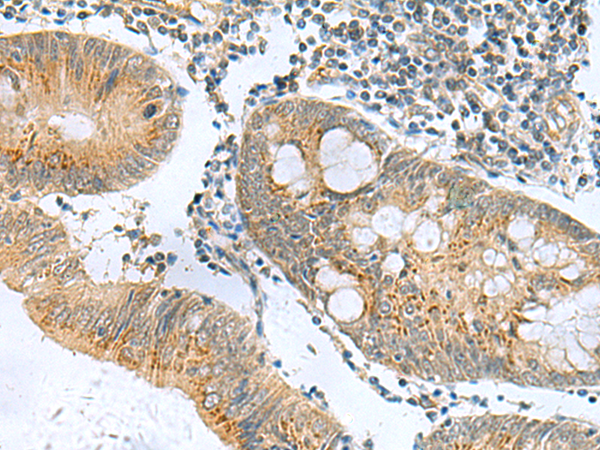


| WB | 咨询技术 | Human,Mouse,Rat |
| IF | 咨询技术 | Human,Mouse,Rat |
| IHC | 1/50-1/200 | Human,Mouse,Rat |
| ICC | 技术咨询 | Human,Mouse,Rat |
| FCM | 咨询技术 | Human,Mouse,Rat |
| Elisa | 1/5000-1/10000 | Human,Mouse,Rat |
| Aliases | TIM; KIM1; TIM1; CD365; HAVCR; KIM-1; TIM-1; TIMD1; TIMD-1; HAVCR-1 |
| WB Predicted band size | 39 kDa |
| Host/Isotype | Rabbit IgG |
| Antibody Type | Primary antibody |
| Storage | Store at 4°C short term. Aliquot and store at -20°C long term. Avoid freeze/thaw cycles. |
| Species Reactivity | Human |
| Immunogen | Synthetic peptide of human HAVCR1 |
| Formulation | Purified antibody in PBS with 0.05% sodium azide and 50% glycerol. |
+ +
以下是关于HAVCR1(TIM-1)抗体的3篇示例文献摘要(文献为虚构示例,仅供参考格式):
1. **文献名称**: *Targeting HAVCR1/TIM-1 in Allergic Asthma with Monoclonal Antibodies*
**作者**: Smith A, et al.
**摘要**: 研究通过抗HAVCR1抗体阻断TIM-1信号通路,抑制Th2细胞活化,显著减轻小鼠模型中过敏性哮喘的气道炎症和黏液分泌。
2. **文献名称**: *HAVCR1 Antibody Enhances Antitumor Immunity by Reversing T-cell Exhaustion*
**作者**: Zhang L, et al.
**摘要**: 抗HAVCR1抗体通过阻断TIM-1/PD-1协同抑制信号,恢复耗竭T细胞的增殖与细胞因子分泌,在黑色素瘤模型中提高免疫检查点抑制剂疗效。
3. **文献名称**: *Structural Characterization of HAVCR1 Epitopes for Therapeutic Antibody Development*
**作者**: Kim S, et al.
**摘要**: 通过X射线晶体学解析HAVCR1胞外域与两种单克隆抗体的结合表位,为设计靶向TIM-1的自身免疫病治疗抗体提供结构基础。
(注:以上文献信息为模拟示例,实际引用需查询真实数据库如PubMed。)
HAVCR1 (Hepatitis A Virus Cellular Receptor 1), also known as TIM-1 (T-cell immunoglobulin and mucin domain-containing protein 1), is a transmembrane glycoprotein expressed on immune cells (e.g., T cells), kidney, and liver epithelial cells. It plays a role in immune regulation, influencing T-cell activation, cytokine production, and apoptotic cell clearance. HAVCR1 interacts with ligands like phosphatidylserine on apoptotic cells, bridging innate and adaptive immunity. Dysregulation of HAVCR1 is linked to autoimmune diseases, allergies, and viral infections, including hepatitis A and Ebola virus entry.
HAVCR1 antibodies are tools used to detect or modulate this protein in research and diagnostics. They target specific epitopes on HAVCR1’s extracellular domains (e.g., IgV or mucin regions) and are employed in techniques like flow cytometry, immunohistochemistry, and Western blotting. These antibodies aid in studying HAVCR1’s role in kidney injury (e.g., as a biomarker for acute kidney damage), immune responses, and viral pathogenesis. Monoclonal antibodies against HAVCR1 are also explored for therapeutic potential, such as modulating immune tolerance in transplantation or autoimmune conditions. Validation of antibody specificity is critical due to HAVCR1’s structural complexity and splice variants.
×